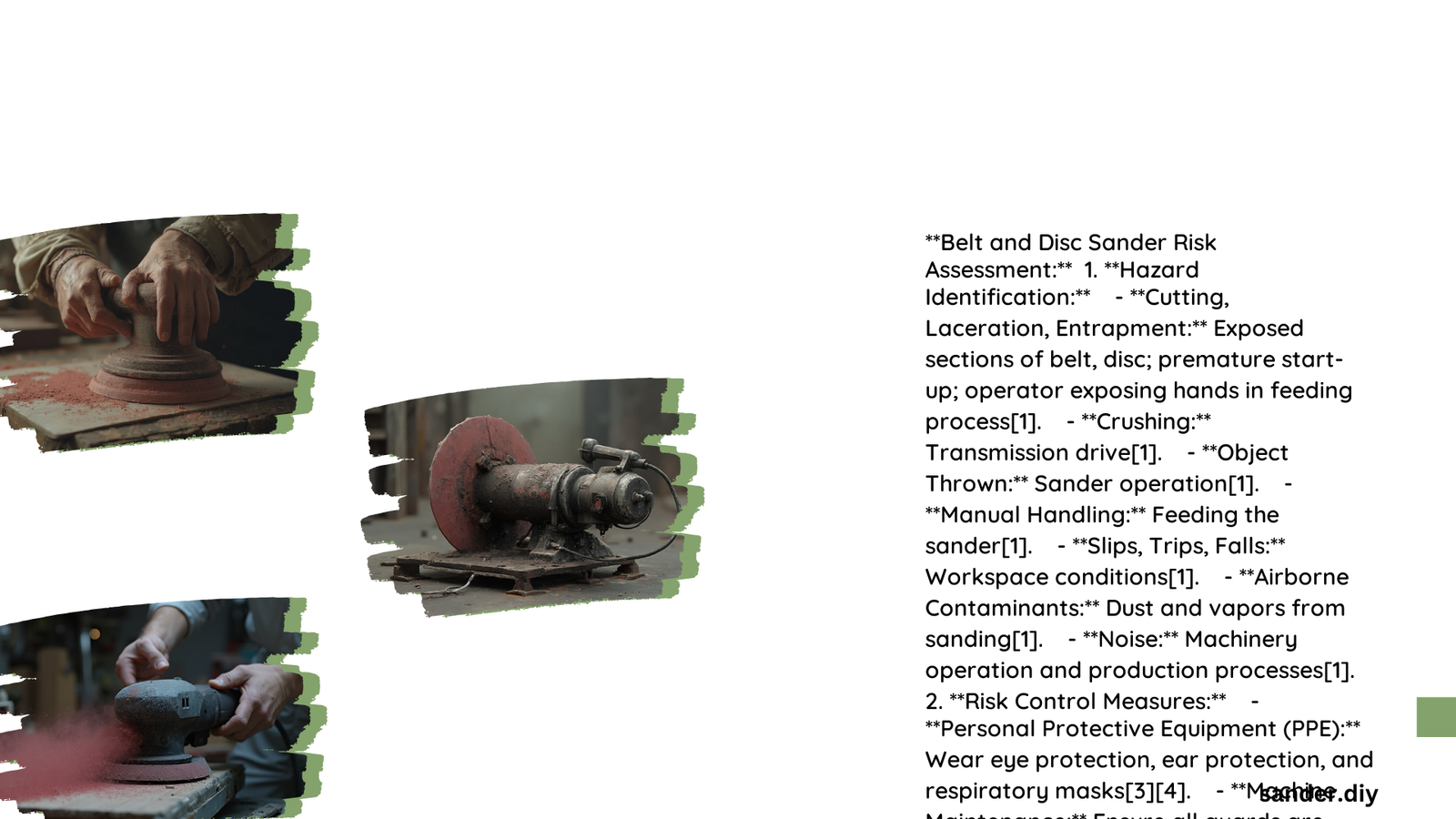Belt and disc sanders are powerful woodworking tools that present significant safety risks if not properly managed. A comprehensive risk assessment involves identifying potential hazards, implementing robust safety protocols, and ensuring operators are thoroughly trained in equipment handling and protective measures. Understanding these risks is crucial for preventing workplace accidents and maintaining a safe working environment.
What Are the Primary Hazards in Belt and Disc Sander Operations?
Physical Risks and Potential Injuries
Belt and disc sanders expose workers to multiple potential hazards that can result in severe injuries:
| Hazard Category | Potential Consequences | Risk Level |
|---|---|---|
| Mechanical Entrapment | Crushing, Laceration | High |
| Projectile Risks | Flying Debris Injuries | Medium-High |
| Dust Exposure | Respiratory Complications | Medium |
| Noise Exposure | Hearing Damage | Low-Medium |
Mechanical Entrapment Dangers
Mechanical entrapment represents the most critical risk in belt and disc sander operations. Key danger zones include:
- Abrasive belt/disc surfaces
- Drive transmission mechanisms
- Roller and feed mechanisms
- Unguarded moving parts
How Can Operators Minimize Personal Risk?
Personal Protective Equipment (PPE) Requirements
Comprehensive PPE is essential for safe sander operations:
- Eye Protection
- Safety glasses with side shields
-
Full-face shields for additional protection
-
Respiratory Protection
- Dust masks
-
Respirators for fine particle environments
-
Hearing Protection
- Earplugs
-
Over-ear noise-canceling protection
-
Hand and Body Protection
- Snug-fitting work gloves
- Long-sleeved, close-fitting clothing
- No loose jewelry or dangling accessories
What Training Protocols Enhance Sander Safety?
Comprehensive Operator Education
Effective training should cover:
- Machine-specific operational guidelines
- Hazard recognition techniques
- Proper work piece handling
- Emergency response procedures
- Regular equipment maintenance checks
How to Implement Effective Risk Mitigation Strategies?
Systematic Safety Approach
- Pre-Operation Inspection
- Check abrasive surfaces for wear
- Verify guard mechanisms
-
Ensure proper belt/disc alignment
-
Workspace Preparation
- Clear work area of unnecessary objects
- Maintain clean, organized environment
- Ensure adequate lighting
-
Implement proper dust collection systems
-
Operational Best Practices
- Always feed work pieces against rotation direction
- Maintain consistent, controlled pressure
- Never force materials through sander
- Keep hands away from active surfaces
What Are Advanced Safety Technologies?
Technological Safety Enhancements
- Automatic shut-off mechanisms
- Integrated dust extraction systems
- Digital monitoring of machine performance
- Ergonomic design improvements
Conclusion

Effective belt and disc sander risk assessment requires a holistic approach combining technological safeguards, comprehensive training, and strict adherence to safety protocols. Continuous education and proactive risk management are key to preventing workplace accidents.
